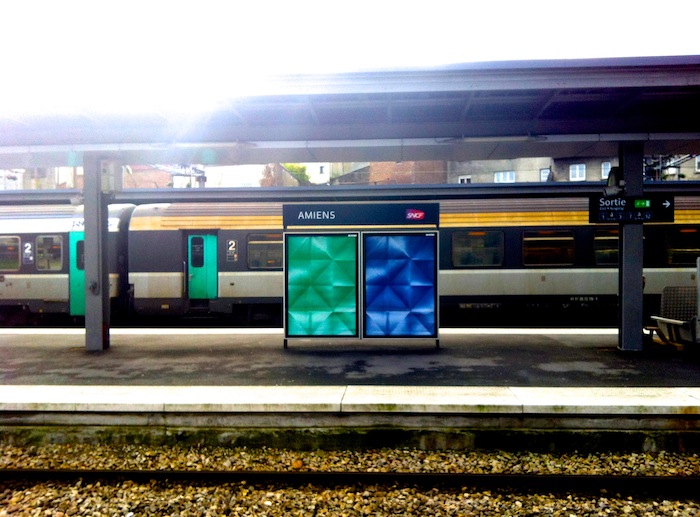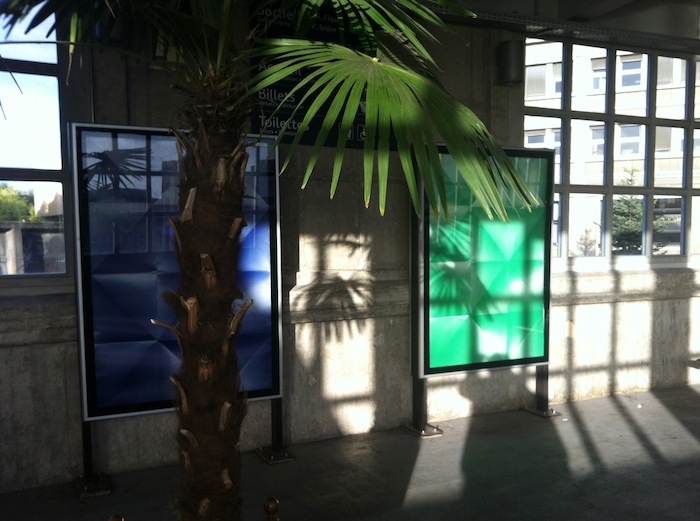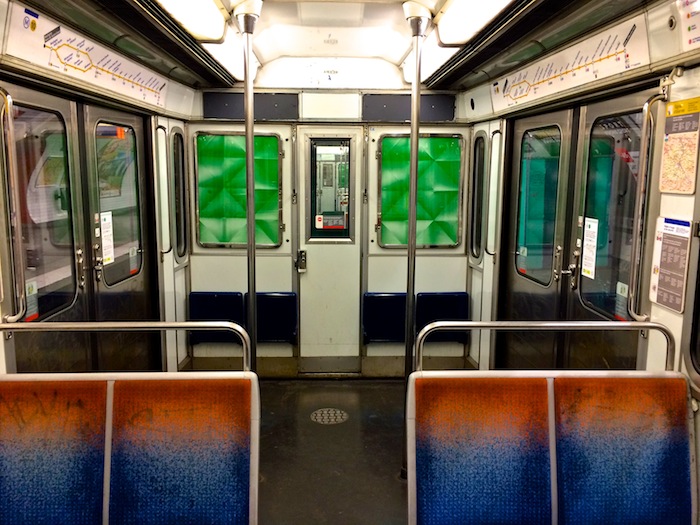There is no name, no credit line, no logo, no message, no words of any sort on the ubiquitous blue and green posters. Yet they are everywhere in France: in and around the 900 SNCF train stations, along the passages that connect the Paris’ 303 Metro stops, and inside the 700 subway trains that crisscross the French capital on 125 miles of track. Introduced in 2009, the posters have been proliferating ever since. Recently, the RATP, the public-transport operator, plastered even more of them in the subway trains, “floating” them inside display cases ordinarily occupied by advertisements.
The repeating diamond-shaped motifs are poetically titled Floating—in all likelihood because their design is a pattern of folded triangular shapes—the same used to make little paper boats. In emerald green or electric blue, the cheerful posters act as decorative panels in the often-dreary, anonymous mass transit environment. But because there are no identifying marks, they merit hardly a glance from commuters. We are so used to staring blankly at advertising slogans that we’ve forgotten how to look at silent images.
The story behind the posters has yet to be told in the mainstream press. A media hush surrounds the project. And, oddly enough, there are relatively few photographs of the posters to be found online. Even their authors, young designers known collectively as Les graphiquants, are reluctant to capitalize on their success. Their website is vague about the entire operation. François Kenesi, a photographer who brokered the concept originally, also keeps a low profile about it.
There is a reason for this tacit cover-up. As attractive as they are, the posters, in fact, herald bad news. They fill spaces left increasingly vacant by businesses who can no longer afford to rent the lightboxes for advertising purposes. With their fragile origami sensibility, the posters celebrate the demise of paper, one of the most bemoaned casualties of the digital age. As a result, when you spot one of these strange blossoms around a bend in a Metro passage or across a train platform, you tend to avert your eyes. Like Baudelaire’s Fleurs du Mal—flowers of evil—their beauty is a poisonous omen from an economic perspective, but a welcome respite for the eye.
Quietly, the Musée des Arts Décoratifs has acquired the wallpaper version of the motif, in white, and papered an entire wall with it in one of its contemporary design galleries. It’s unclear whether the handsome wallpaper will be available commercially.
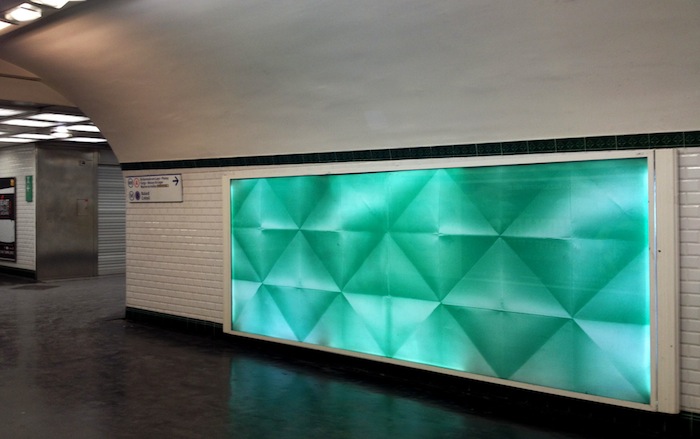
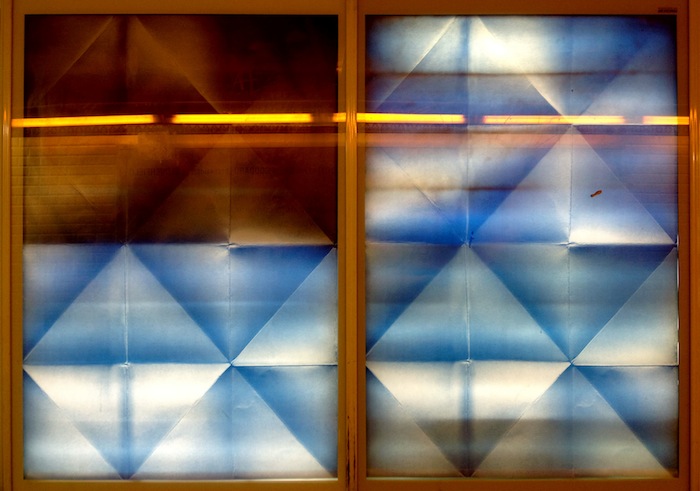
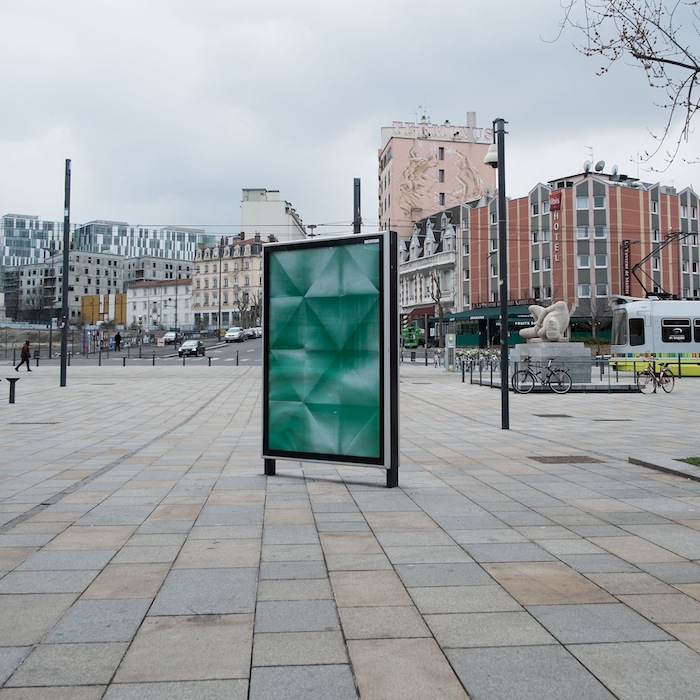
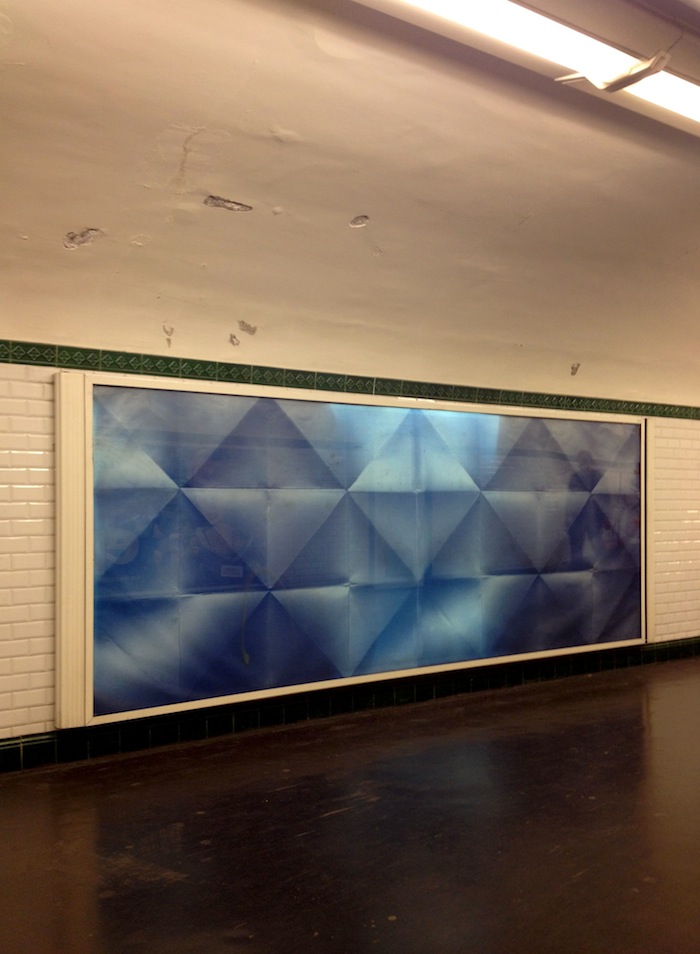
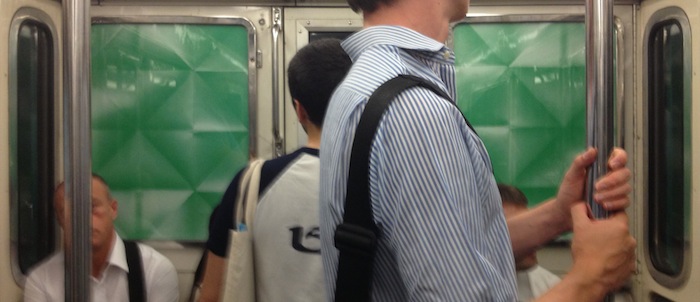
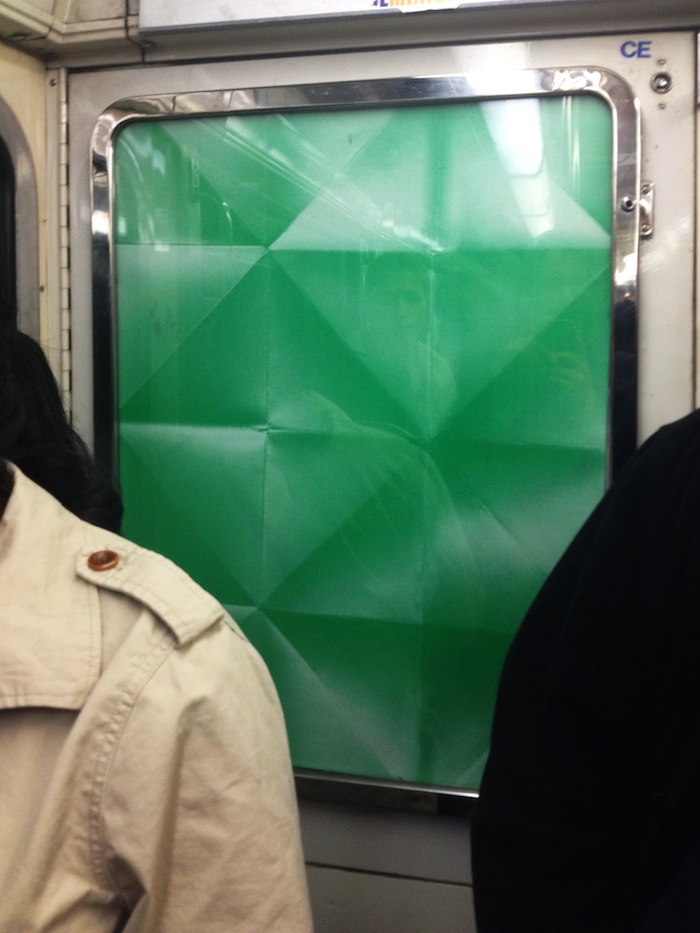
les-graphiquants.fr
Photographs 1–7 by and courtesy of François Kenesi.
Photographs 8–10 by Véronique Vienne.

